7 Simple Deep Linking Tactics You Ought to Use
Most people who work on the web…whether they are veteran SEOs or web content strategists…know about deep linking.
They understand that it is all about linking internal pages. You link internal pages to other internal pages…and you get other sites to link to these internal pages
But few of them actually understand the advanced tactics of deep linking that reduce visitor bounce rate while improving page views, time on site and even subscriber numbers.
If you’d like to learn more about the importance of deep linking, deep linking tactics and when you should avoid deep linking…keep reading.
Let’s do a quick little inbound link audit on your site.
Before we get started, here’s a test. Go to SEOmoz’s Open Site Explorer tool and enter your domain address in the box:
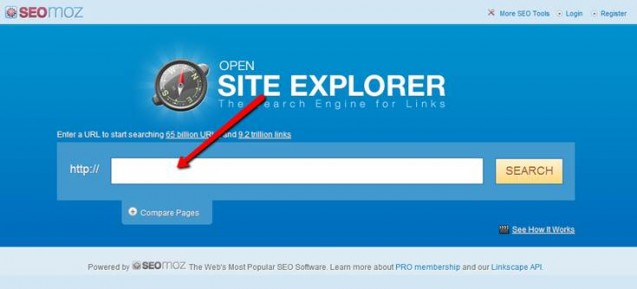
Hit enter and then click on the “Top Pages” tab:

Hit enter and then click on the “Top Pages” tab:

And then calculate the number of inbound links to your home page versus inbound links to all other pages on your site.
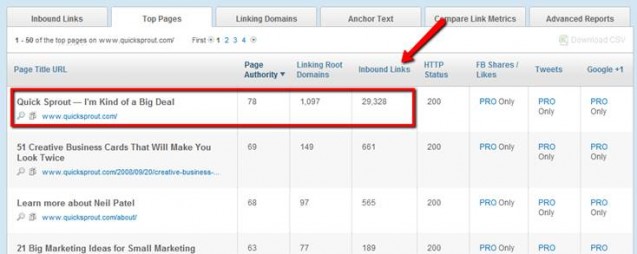
If you have a ratio of 3 to 1 or higher…in other words, if three times as many links hit your home page as they hit every other page in your site…then you probably have a pretty high bounce rate.
What that means is people are not hitting internal pages. They are not getting the relevant content they want…and so they abandon the page!
From the start of any SEO strategy for a site you should have as a goal a ratio of 3 times more inbound links than your home page.
In fact, the higher you can get that ratio, the better.
3 reasons why you should deep link.
One reason you should deep link, like I mentioned above, is that it enhances the users experience. Sending a user to a deep page will probably better relate to his or her goals than sending them to your home page.
Besides, your home page can’t rank for every single keyword you want to optimize.
Let’s look at three other reasons…authority, relevancy and visibility…why deep linking is important to these concepts:
- Raise the authority of the entire site – If all you did was optimize and send traffic to your home page (not that you would be dumb enough to do that), then you might have a home page with a really high authority rank…but the rest of your pages had little or no authority. Well, when search engines looked at your entire site then those poor-authority pages would bring down your home pages authority rank, too. Looking at it positively, deep linking can help you increase your entire site’s authority.
- Increase your site’s overall relevancy – Because you don’t…nor can you…optimize your home page for every single keyword, then you must use internal pages. When the pages you publish contain those keywords in the meta data (URL, title tag, image attribute, etc.) and the body copy, then search engines will crawl and then index your page based upon that keyword. In other words, because the keyword is relevant to the page and you’ve linked to it with a keyword-rich anchor text from another page, Google will consider it an authority…and rank it high.
- Increase your site’s overall visibility – Large sites suffer from too many pages not getting indexed because of their sheer size. This is where good navigational skills like deep linking come into play. These deep links…both from your site and other sites…will help search engines follow the path through your site to these hidden pages…and making them visible by indexing them.
Now that we’ve explored three good reasons for deep linking, let’s look at some tactics.
7 often-ignored deep linking tactics.
The nice thing about deep linking with these tactics is that it is really just about a shift in your thinking. You’ll see what I mean as you keep reading.
- Email signatures – It’s pretty common to put your home page address on a lot of your bio type data. For example, you’ll put your home page URL in your email bio. Don’t do that. Instead, link to an internal page that will add value to your email readers like I do with my 51 Business Ideas That Will Make You Look Twice. While this may not give you any SEO juice, it will definitely send traffic to a useful and compelling page that will hopefully get them sticking around and subscribing.
- Guest post bios – Another common flawed tactic when it comes to linking to your home page is when you write a guest post. You’ll commonly write something like “Neil Patel is a…and blogs at My Blog,” which links to your home page. Rather, link to a deep page in your site that will drive traffic to a relevant page…thus reducing the amount of bounces you’ll get.
- Blog comments – And it’s also pretty natural for you to drop your home page address in the website form on people’s blogs when you leave a comment. A better strategy is to leave a link to an internal page that is relevant to that audience (even if it is nofollowed). You will get traffic from that link…and if you send them directly to your home page, then they won’t know where to go next.
- Forums – Like with blog comments, if you leave a comment on a forum, make sure you manually enter a URL that will drive traffic to an internal page instead of your home page.
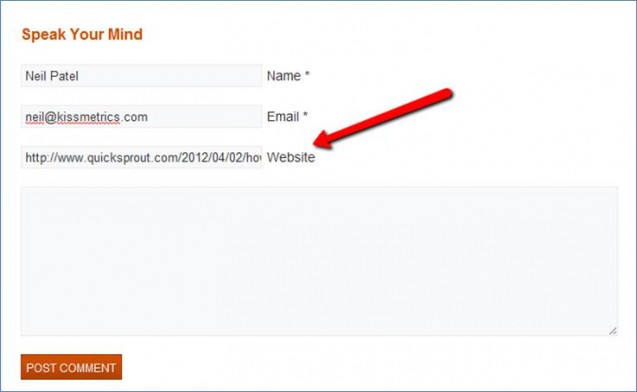
- Social publishing sites – Your next tactic is to use social publishing sites like Squidoo or Scribd…and link to internal pages on your site. Squidoo lets you create single web pages on a narrowly-defined topic, while Scribd will let you upload documents that you can share. Keep in mind that when you create accounts with these social publishing sites that you do not link to your home page! Link to a relevant internal page.
- Social networking sites – Wherever you’ve created a social media account…Google+, Twitter, Pinterest, etc….make sure that when they ask for a link you don’t give them your home page link. Choose a page that is relevant to that audience.
- Article syndication – Any time you create an article with a byline for syndication…make sure you choose a relevant link to a page that will enhance the user experience. In the example below I linked the keyword “SEO Consultant” to an internal page on my site…not to my home page, which I did with “QuickSprout”.
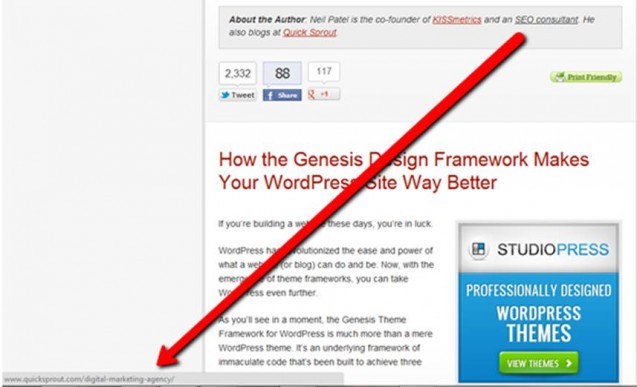
How to help deep link users become subscribers.
As you build your website to accommodate visitors who don’t come in at your front door but by a back door, there are some usability elements you need to think about.
Here are three:
- Where is the user? When a visitor comes in through an internal page give him clues about where he is in your site. You can do this by positioning your logo in the upper-right corner of the page, a one-click route to the home page (usually accomplished in a “Home” tab) and a search option.
- Where else can the user go? Once your visitor digests the relevant information on that internal page, give him or her options to explore more of your site. Give them a list of related articles or a list of popular articles.

- What else has the user been? It’s important to understand that visitors can arrive at your internal page hundreds of ways. This means you can’t assume that they’ve followed a scripted path and seen everything you’d hope they’d seen. For example, this is why it’s standard to put an email newsletter subscribe box on every page. You can’t assume they’ll see…let alone land!…on a landing page promoting that email newsletter. Make sure relevant information is always available for them.
When you shouldn’t deep link.
Sometimes deep linking is not wise…like in cases where you need them to see a higher-level page before they see the one below it.
This is true, for example, for a site like Which Test Won? They run tests, get the results and then challenge you to guess the results.
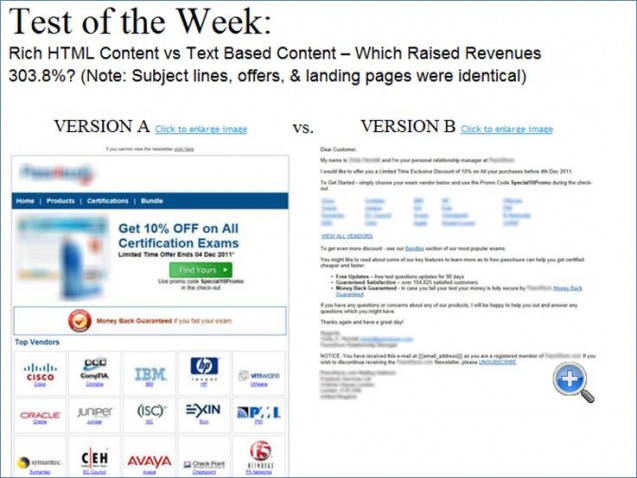
If you were driven to the page with the results, then you’d know the answer and the challenge would be spoiled for you.
Keep search engines from linking to these pages by using this code:
<META NAME=”robots” CONTENT=”noindex”>
That will keep the search engines from indexing that page.



